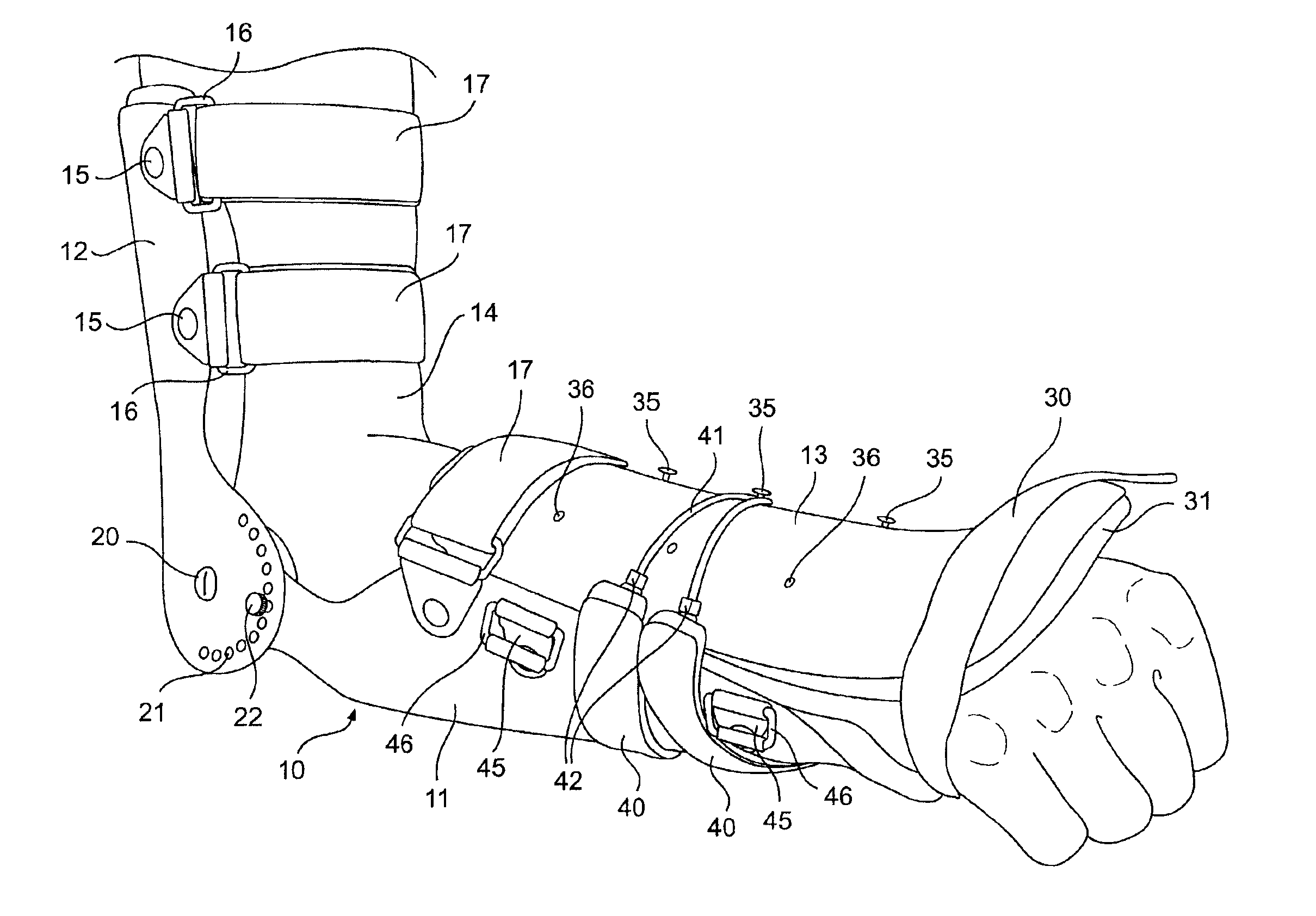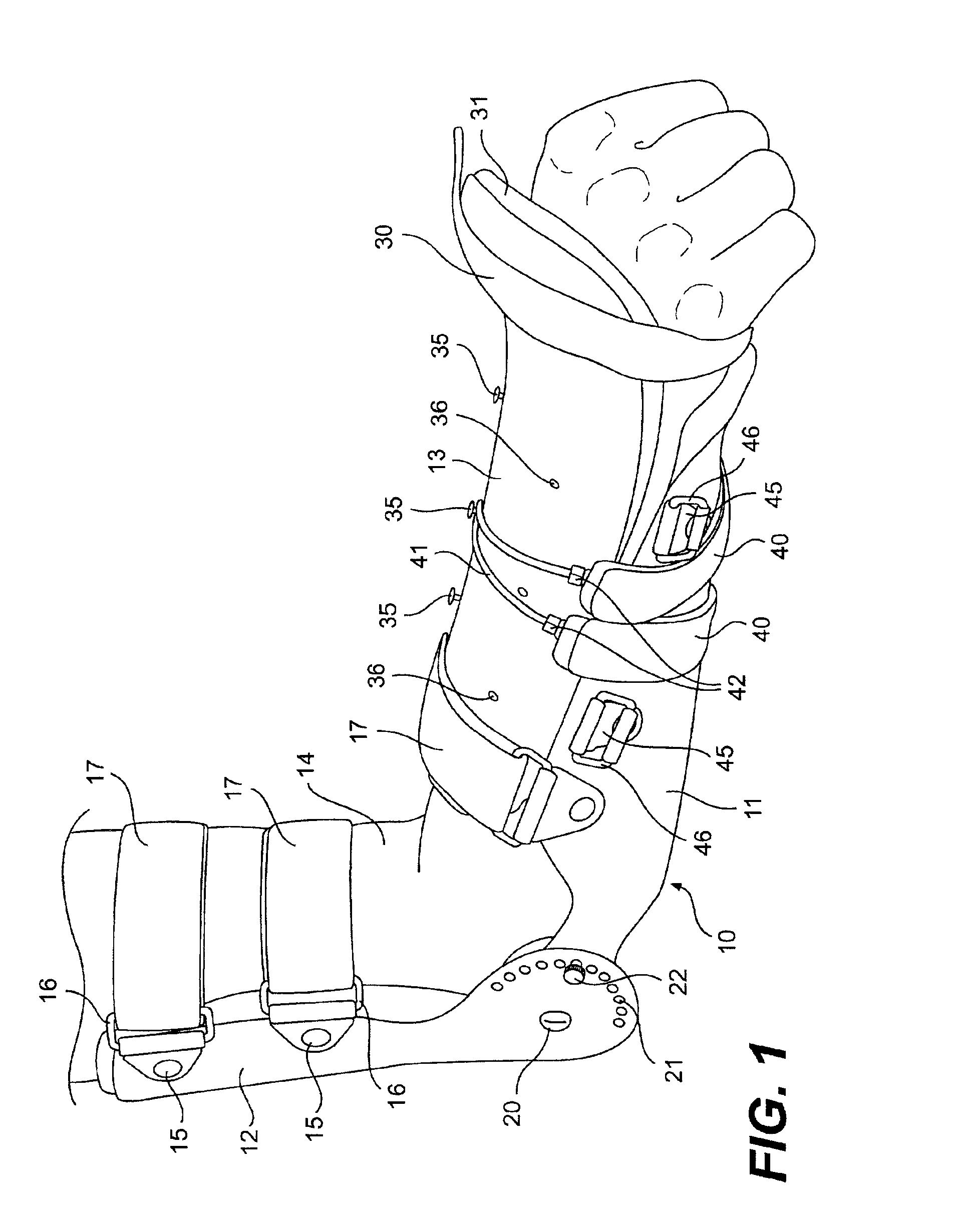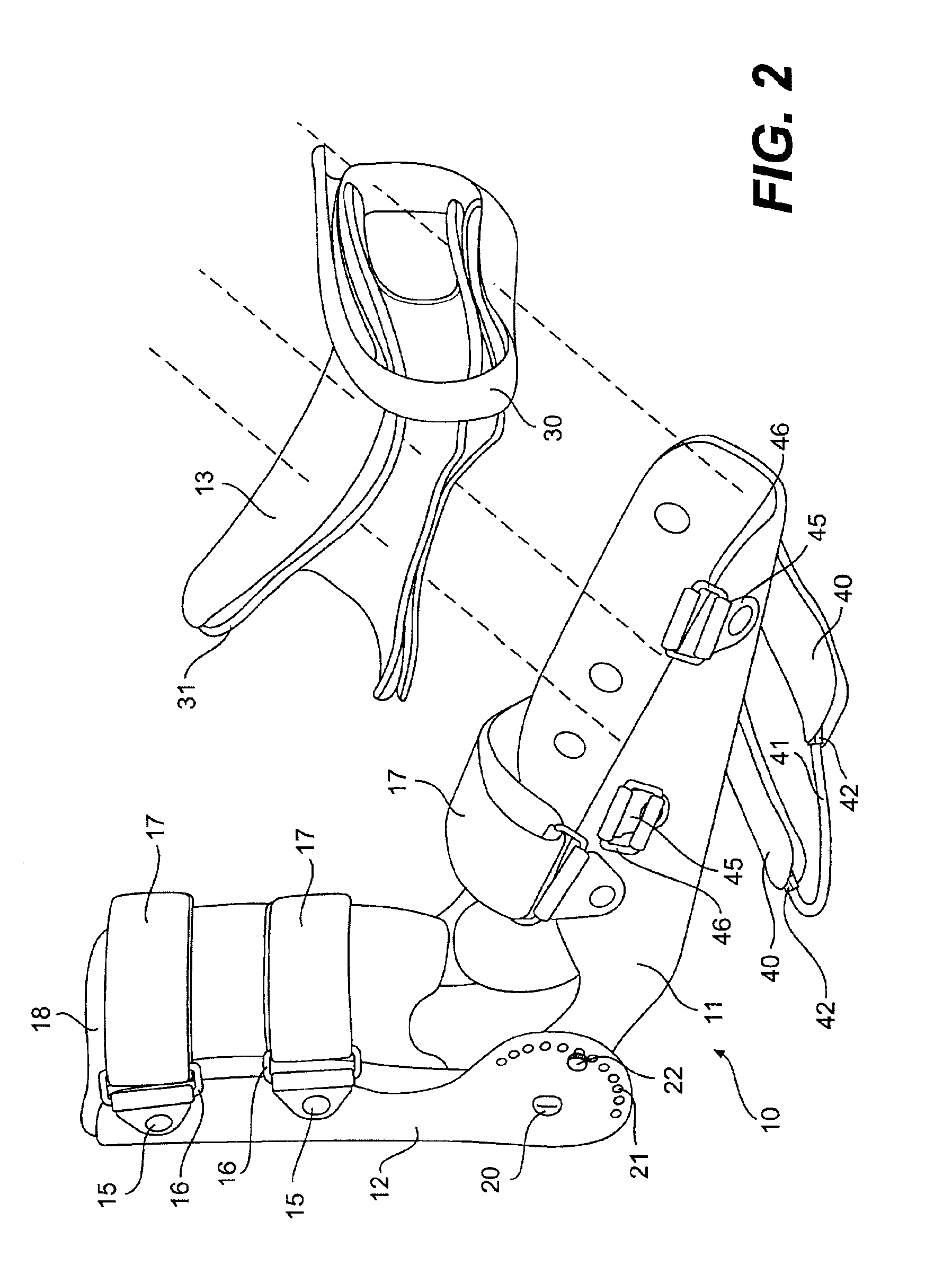Supination/pronation therapy device
a technology of pronation and supination, which is applied in the field of orthopaedic devices, can solve the problems of patient loss of rotational flexibility, uneven force across the device, and no one promotes rotation or creates rotational forces,
- Summary
- Abstract
- Description
- Claims
- Application Information
AI Technical Summary
Problems solved by technology
Method used
Image
Examples
Embodiment Construction
The present invention is directed to an orthotic device used to promote the rotation of a patient's wrist and forearm. The rotation of the wrist in the direction in which the palm is pointed upwardly or skywardly is called supination. The rotation of the wrist in which the palm is facing downwardly is referred to as pronation. The orthotic device described herein can apply either a dynamic or static force in the rotational direction of supination or pronation. Further, that rotational force may be varied by a user or therapist in accordance with the needs of a patient.
Turning now to the drawings, FIGS. 1,2 and 4 illustrate an orthotic device in accordance with the present invention in which a dynamic force of rotation can be applied to a patient's forearm. (There is reference made throughout of a patient's “wrist” or “forearm” when referring to the application of therapy herein. The terms are effectively referenced to interchangeably.) The orthotic device 10 is a brace adapted to su...
PUM
 Login to View More
Login to View More Abstract
Description
Claims
Application Information
 Login to View More
Login to View More - R&D
- Intellectual Property
- Life Sciences
- Materials
- Tech Scout
- Unparalleled Data Quality
- Higher Quality Content
- 60% Fewer Hallucinations
Browse by: Latest US Patents, China's latest patents, Technical Efficacy Thesaurus, Application Domain, Technology Topic, Popular Technical Reports.
© 2025 PatSnap. All rights reserved.Legal|Privacy policy|Modern Slavery Act Transparency Statement|Sitemap|About US| Contact US: help@patsnap.com



